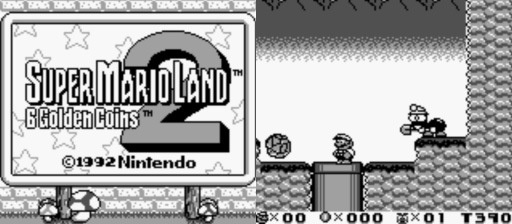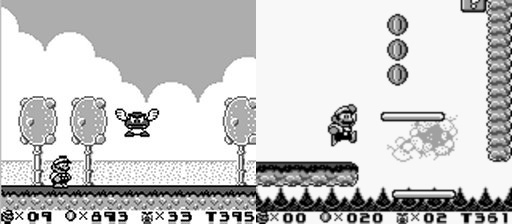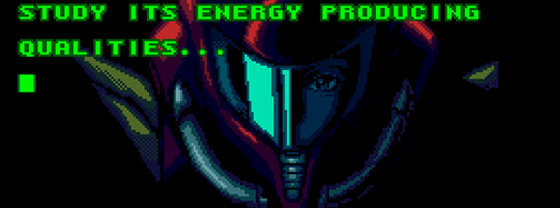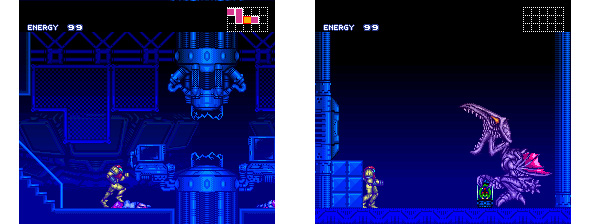God of War II – A Review
August 12th, 2010
Three months ago, and with grand foresight, I vowed to consume as much media (games, movies, comics, books) as I possibly could before I’d leave almost all of it behind as I go to live abroad in China. Some of this media I managed to write about before I left, some of it I’ve subsequently caught up on over the past three months, and then there’s all that note-taking sitting in OpenOffice documents in my writing folder. God of War II belongs to the latter.
God of War II is a direct narrative and gameplay continuation of God of War, which means that, similarly to the Half-life episodes, God of War II streamlines the culmination of mechanics built up by the conclusion of God of War and re-uses them as a base for the beginning of God of War II. By virtue of being welcoming to new players though, Kratos is robbed of these abilities by his father-cum-uber-nemesis Zeus at the game’s onset, acting as a narrative justification to re-teach the ropes and warm players into the experience*.
For continuing players this amounts to a heap redux which God of War II‘s largely peripheral additions to the combat system fail to quell. (Newer players will similarly find the combat stretches beyond its means, but perhaps not as immediately as returning players). A smattering of aggressive new moves mapped to the L1 button when used in conjunction with the face buttons, a spiffied up Rage of the Titans (rage mode) and some new spells do fend off the familiar, but fail to sustain player interest through what is a significantly extended play experience.
That’s not to discount the peripheral additions though, since, as irrelevant as they are to the most established part of the experience (the combat), they do in fact play a part in pushing the game forward. Kratos has a couple of new weapons at his disposal, including a hammer, sword and bow. Aside from the arrow which can be rapidly shot between intermissions of slashing to maintain combos, none of these diversions are given enough spotlight to deliver attention away from the effectiveness of the Blades of Chaos. Smart players will realise that the best way to play God of War II is to ignore these distractions and rely on the tried and trusted attack patterns from God of War while adding a bit of oomph, now and then, with the new L1 attacks or the spells.
It’s a shame that there isn’t enough added variance to the combat as God of War II is an excellent example of good organisation of gameplay elements. God of War II shifts from combat, to puzzling, to platforming, to narrative, to boss battle with an exacting sense of understanding of how much can be bitten off of each of these systems. Furthermore, new mechanics, landscapes and enemy types are interspersed at the most suitable points in the game. You are always presented with something new and interesting just as your enthusiasm for your current occupation begins to wane. Sony Santa Monica clearly nailed this element with a hefty amount player testing, which is why it’s disappointing then that the depleted combat systems works only to subvert the games otherwise great pacing.
It would be remiss of me to forget God of War II‘s stronger emphasis on puzzles, platforming and set pieces, all of which have been well supported by the new time freezing, flying (Icarus’ wings), chain swinging and Medusa’s head mechanics. The set pieces, particularly the flying sequences, are always exciting and well connected to the context of the game (for example, obtaining Icarus’ wings). The boss battles are equally impressive in the way they draw on more elaborate forms of tactics and spatial awareness which isn’t encountered in the moment-to-moment combat.
But ultimately, none of this can save Kratos from that niggling itch that the combat is not fresh and exciting enough to sustain the experience. The end result, which is overbearingly evident by the end of the game, are the large slumps of uninteresting gameplay which undermine the entire production. By failing to directly address the heart of the experience (the combat) in a meaningful way, I don’t think that God of War II is deserving of its title as the “magnum opus” of the PS2. In saying that though, the combat still holds a level of succulence which cannot be denied and despite the lack of revision, God of War II is still a premier action game, particularly in light of the excellent pacing of the experience.
*This last point is surprising given that God of War III simply dumps immediate tutorial on the player.
Super Metroid – The Tenets of a Metroid Game
August 9th, 2010
The Tenets of a Metroid Game
Although Metroid can be categorized as a platforming shooter within a space-themed context, the franchise isn’t so much about the shooting or the jumping at all. Rather, Metroid is all about that misplaced bit of space rock. You know, the one with a little bit of extra fungus. The one that, after met with a morph ball bomb, will string you down a tiny alley to a small chamber containing the next power-up. Progression in Metroid hinges on the abilities granted by various power-ups which are connected to a string of environmental puzzles. It’s in the player’s ability to realize these puzzles through acute observation and then use their ability set to act upon their observations that Metroid reveals its true colors as a game of deep observation and multi-faceted problem solving. Metroid has always relished in being more than what it presents itself as, and series fans appreciate the franchise for valuing the deep implicit over the loud and overt. There’s a maturity in the series which has gone untarnished even as the franchise has evolved from two to three dimensions.
Metroid is also an innovator, but rarely proclaims its achievements on the back of the box. The Metroid games have not just defined but also realized a style of video game narrative that intertwines story with landscape. Oftentimes in a Metroid game, you’ll find yourself entering a world where events have long passed, and as the player you piece together story through the visual, audio and interactive pieces of the landscape (in the Metroid Prime sub-series text is also included). Through it’s environment Metroid builds a civilization and tasks the player as a defacto cultural architect. In this regard, many of the environmental puzzles, particularly those which require the use of machinery or are constituted with cultural relics, act as demonstrations of civil processes. Rarely do video games build lore this rich, or yet, so seamlessly into the fabric of the gameplay. Metroid is a narrative of few words, but with depth that many strive for.
Tense atmosphere and the sense of isolation felt by the player are also tenets of the Metroid franchise. In Super Metroid, the title screen with the baby metroid in the jar establishes an almost complete absence of life. Again, the setting, but, more correctly, the sound is used as a device to control mood. Where many other games opt for busy noise, Metroid instead opts for controlled instances of silence followed up crescendos which build and create tensions. Moments where little happens, but much is felt.
Since the atmosphere, narrative and overall framework for exploration are harmoniously built into the environment and therefore the gameplay, Metroid is a franchise that stands as a testament to good game design. As Metroid‘s design is very medium-centric, relying on the factors that define video games (interactivity, adaptive environments), the franchise excels at conveying atmosphere, narrative and challenge to the player.
More obvious to mainstream video games folk is the fact that Metroid, through protagonist Samus Aran, champions femininity without sexualization or even glorification of the empowerment of women. Metroid, particularly Super Metroid – the title in question – has been a standout title for speed running, the art of completing a game in the shortest time possible. Overall then, Metroid is an eminent video game series, a series which fosters exploration, harmonious narrative and gameplay, atmosphere, works against the grain of video game gender stereotypes, yet facilitates dedicated game communities through speed running. And for all this, in the sense of the games themselves, Metroid is modest about its achievements which makes it all the more a champion.
R&D1: Deconstructing the Mario franchise on the Game Boy
August 1st, 2010
Portable game development has always acted as a test bed for experimental ideas. The handheld platforms are inexpensive to develop for and widely regarded as second-tier products to their console counterparts, making them the ideal haven for experimentation. Knowing this, R&D1, a technically-minded internal studio at Nintendo (now absorbed into Nintendo Software Planning & Development), used the newly released Game Boy as a way to expand the company’s most famous property: Mario. The design sensibilities and the innovations which evolved from the early Game Boy games Super Mario Land and Super Mario Land 2: 6 Golden Coins would find themselves not only canonized into franchise lore, but also playing a wide-reaching role in further developments of the series.
Super Mario Land
Prior to, and even since Super Mario Land‘s release in 1990, no other Mario title has modeled itself on real world cultures. Perhaps in a move to justify the “land” part of its title, Super Mario Landwas no longer set in the Mushroom Kingdom, but Sarasaland. Sarasaland was divided into 4 parts: an Egyptian-themed environment, an alien water world, ancient Aztec ruins and a Japanese oriental garden whose final act was set amongst the clouds. This was Super Mario Land‘s core conceit, and although no game in the series has since replicated world culture, Super Mario Landpaved the way for environments far removed from the realm and influence of the Mushroom Kingdom. Chocolate Island in Super Mario World, Yoshi’s Island in Super Mario World 2 and Isle Delfino in Super Mario Sunshine are good examples.
In relocating Mario outside of his stomping ground, R&D1 also replaced franchise staples: Bowser with Tatanga, Princess Peach with Princess Daisy and all familiar enemies – minus goombas – for stage-specific variants. Super Mario Land drove momentum for new and diverse enemies sets which could, at least for their respective titles, take a prominent role in the main cast. Princess Daisy has since been recognized in series cannon, playing a recurring role in the Mario sports andMario Kart series.
Not only did Super Mario Land go global and shed the Mushroom Kingdom attire, but the items and mechanics which remained were subversively tweaked and altered. Fireballs could now bounce off walls and surfaces, collecting coins in its wake. This lead to some cleverly designed puzzles as coins were often placed outside of Mario’s physical grasp. The end of level bonus was also reworked so that instead of being rewarded with a 1UP upon landing on top of a flagpole, players would have to navigate tricky platforms to reach a second floor which would prompt a small mini-game granting power-ups. The princess was still in another castle, however this time she was a facade whom would transform into one of Tatanga’s minions; one of the more obvious acts of tomfoolery. Further still, R&D1 undermined players with the koopa-esque bomb turtles who would detonate shortly after jumped upon. Nabbing a mushroom in mid-air would no longer cut Mario’s forward momentum. Not all of these tricks were intentional though, because of the Gameboy’s monotone graphics and Super Mario Land‘s tiny sprites, 1UP mushrooms were changed into hearts so that they could be easily discerned from power-ups. By tinkering with the player’s prior understanding of series norms, even minutely as some of the examples prove, Super Mario Land acknowledged a form of general trickery, and humor for long-time players which has permeated through most iterations of the series. Wriggler and Mecha-Bowsers in Super Mario World, Flower-head Shy Guys in Yoshi’s Island are further examples.
Totally new to Super Mario Land are the shoot-’em-up inspired levels where Mario mans a submarine (marine pop) or a plane (sky pop) to shoot down his enemies. The submarine level replaces the usual under water, swimming levels which are absent in this iteration. Even though these sections are tangential to the platforming, you can see elements of this design in Super Mario Sunshine and Super Mario Galaxy where other gameplay modes, such as pull stars, 2D gravity switching and manta ray surfing sequences are interspersed with the platforming.
Perhaps, above everything else though, Super Mario Land established portable design sensibilities.Super Mario Land wasn’t merely Mario on a portable console; it was a game designed for dedicated play in front of a TV adapted to the needs of playing on the go. This sense for quick, short bursts of play has been pivotal to many of Nintendo design sensibilities both in the console and handheld space. The star system in the 3D Mario games are examples of portability-minded design on a console, the “turning the machine on everyday” design of the Wii is another such example.
Super Mario Land 2: 6 Golden Coins
Super Mario Land 2 isn’t as radical as its predecessor, but it’s still pretty far removed. This time Mushroom Kingdom environments are mixed with properties of suburban reality. In many ways,Super Mario Land 2: 6 Golden Coins is reminiscent of the 1989 movie Honey, I Shrunk the Kids.Super Mario Land 2 is a slower-paced, exploratory platformer, so all of the sprites are enlarged which makes the world feel large and expansive. The overwhelming nature of the world works in combination with the assembly as household pests which populate the world alongside goombas and koopa troopas. This ordinary form of reality is revisited somewhat in Isle Delfino in Super Mario Sunshine and the Princess’ castle in Super Mario 64.
Two of the themed worlds deserve particular mention though. The first is the moon stage which would arguably foreshadow the release of Super Mario Galaxy. The second is the bizarre toy Mario level. An obvious piece of self-reference in the series at the time, later preceded by Special in Super Mario World. This type of irreverent self-reference would become a common theme throughout most of Nintendo’s games. It’s worth adding that Super Mario Galaxy (Toy Time Galaxy) also features a mechanical toy as one of its planets, taking liberally from Super Mario Land 2.

Super Mario Land 2‘s greatest work of subversion comes with the introduction of anti-hero Wario. Labeled as a temper tantrum tyrant, Wario was jealous of Mario’s position as a Mushroom Kingdom socialite and literally dethroned him from his castle. Wario spun out his own sub-series of games and gave a sense of character, sophistication and self-deprecating humor to the villains of the Mario universe. Waluigi, Fawful and even the toads in Super Mario Galaxy are additional examples.
In contrast to Super Mario Land, which utilized the original Super Mario Bros. as its design template, Super Mario Land 2 is a hybrid of Super Mario Bros 3 and Super Mario World‘s overworld. Levels may be connected via a hub world, but structurally 6 Golden Coins is completely open. On completing the initial tutorial stage, the player is free to tackle any of the 6 worlds at their leisure. This open-ended approach forgoes linearity and therefore, in order to be even-handed, the difficulty remains constant throughout the entire game. Even though Super Mario Land 2 is well designed, the element of challenge is significantly muted and is the only Mario title to employ such a structure. Super Mario 64 is inspired by this structure, but rather than unlock the entirety of the game’s content from the onset, it locks more challenging content behind a level completion system represented through the quantity of stars.
Otherwise, Super Mario Land 2, similarly to its predecessor, toys with series tropes. Collecting 100 coins will result in an invincibility star appearing on screen. Players can collect up to a maximum of 999 coins and gamble them away for lives at a slot machine in the center of the overworld.

Super Mario Land 2: 6 Golden Coins is more of a continuation of Super Mario Land‘s break from tradition. It takes the elseworld’s approach of Super Mario Land and drives it into a more suburban, natural setting. Self-referential elements feature prominently and the difficulty system is muted across all levels, which has never been seen in other Mario games.
Conclusion
In creating games as ceaselessly imaginative as Super Mario Galaxy, a continuous stream of innovative ideas isn’t just important, it is pivotal to the development process. Understanding the design of titles like Super Mario Land and Super Mario Land 2, those which flourished under freer development conditions, gives us a glimpse at the backbone of the philosophies which have gone on to characterize not just modern Mario design, but the evolution of Nintendo as developers and game designers.









 Game Design Companion: A Critical Analysis of Wario Land 4 - $7.99
Game Design Companion: A Critical Analysis of Wario Land 4 - $7.99 Level Design: Processes and Experiences
Level Design: Processes and Experiences Speed Boost: The Hidden Secrets Behind Arcade Racing Design - $5.99
Speed Boost: The Hidden Secrets Behind Arcade Racing Design - $5.99 Adventures in Games Analysis: Volume I - $5.99
Adventures in Games Analysis: Volume I - $5.99







